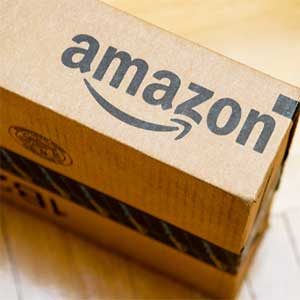
Last September, Amazon registered two new trademarks for online jewelry products: For Keeps by Amazon and Mia Noir. They could join the e-tail giant’s extensive private-label jewelry brand, Amazon Collection, which now comprises more than 3,000 items.
Amazon has been in the private-label business for about a decade. According to TJI Research, it now has a stable of 138 names and 427 exclusive brands. And clearly it sees more potential in the jewelry world. A new job ad seeks a jewelry person “to own an end to end product lifecycle from ideation to execution.” A lab-grown diamond executive just told me that Amazon wants to enter that business.
The site’s private-label offerings have recently become the subject of much speculation and controversy. In January, a spokesperson said they account for less than 1 percent of its total sales.
That has led data firm Marketplace Pulse to suggest that its private-label brands aren’t as successful as many believe.
“The brands Amazon launched are weak from the point of view of traditional brand building practices, have little brand recognition, no presence outside of Amazon, and rely on low prices and high ratings,” wrote Marketplace Pulse founder and CEO Juozas “Joe” Kaziukėnas in a comprehensive blog post. “The brands Amazon has launched are not brands. They are a collection of products for when the brand doesn’t matter.”
Yet the post also calls the Amazon Collection jewelry line the e-tailer’s second best-performing label, next to Amazon Basics. It believes that Amazon Collection now accounts for 8 percent of its private-label sales, based on the number of products it offers and the reviews it gets.
Jewelry is the “perfect environment for a private-label brand,” Kaziukėnas tells JCK. “When there is no clear category leader, [the private-label brands do] well. People go to Amazon for a product. They don’t necessarily know what the product will be.”
Having Amazon in the name seems to help: All of its top-performing brands include it. That may be why it tacked on “by Amazon” to the more traditional “For Keeps.”
For now, Amazon’s private-label jewelry is mostly low- to medium-end product. Amazon Collection’s offerings start at $10, and go as high as $25,000, but the average price point is $221.
Kaziukėnas thinks the company wants to stay in the low-end range, as even the so-called “everything store” knows it doesn’t sell every item to everyone. It’s shown little ability to provide an elevated, or even enjoyable, experience, he says.
“Shopping on Amazon is dull and uninspiring. But for some people, it’s what they need. People do want an experience. They just can’t afford it. And that’s what is underpinning Amazon as a company.”
As malleable as the Amazon platform is, Kaziukėnas feels it’s had difficulties conquering new territory. He points out that the introduction of Amazon Handmade has seemingly not put a dent in Etsy’s business.
Amazon’s foray into private-label brands has raised antitrust concerns, with the European Union competition commission launching an investigation. Some have suggested that given its access to data and resources, Amazon can dominate other sellers by making cheaper copies of its products.
A 2016 Bloomberg article told the story of Rain Design, whose best-selling Amazon laptop stand was dethroned by a cheaper site-produced look-alike. “Got a hot seller on Amazon?” the story’s headline read. “Prepare for the e-tailer to make one too.”
But Kaziukėnas, while calling the Rain Design saga “scary,” doesn’t see that happening often.
“Amazon is less about the copying what others are doing and more about demand for keywords. Amazon usually sells by product type. The reason Amazon is selling batteries is because that is one of the top searched-for categories on Amazon.”
He thinks it doesn’t make sense for Amazon to turn brands into enemies, as it will “kill their platform.
“I don’t think that proprietary brands are the future of Amazon,” he adds. “It will be an area for experimentation, but I don’t think it will be a major part of its business. It will be a percentage of their sales, but I don’t think it will be a higher percentage than at Walmart or Target.”
He does see that, instead of producing items itself, Amazon will increasingly partner with existing vendors for private-label product.
“They know how to make batteries really well. But fashion and clothing items, they don’t know how to do very well.”
Long-term, he predicts, instead of producing its own merchandise, Amazon will strive to be a platform for other businesses—a role now mostly played by Instagram.
“All the direct-to-consumer brands have been built on Instagram. If you are Nike, and you launch a new sneaker, how do you communicate that to Nike consumers? Through Instagram. Right now, there is no way to do it on Amazon. I’m sure that’s something they’re looking at.”
(Image courtesy of Amazon.com)
Follow JCK on Instagram: @jckmagazineFollow JCK on Twitter: @jckmagazine
Follow JCK on Facebook: @jckmagazine